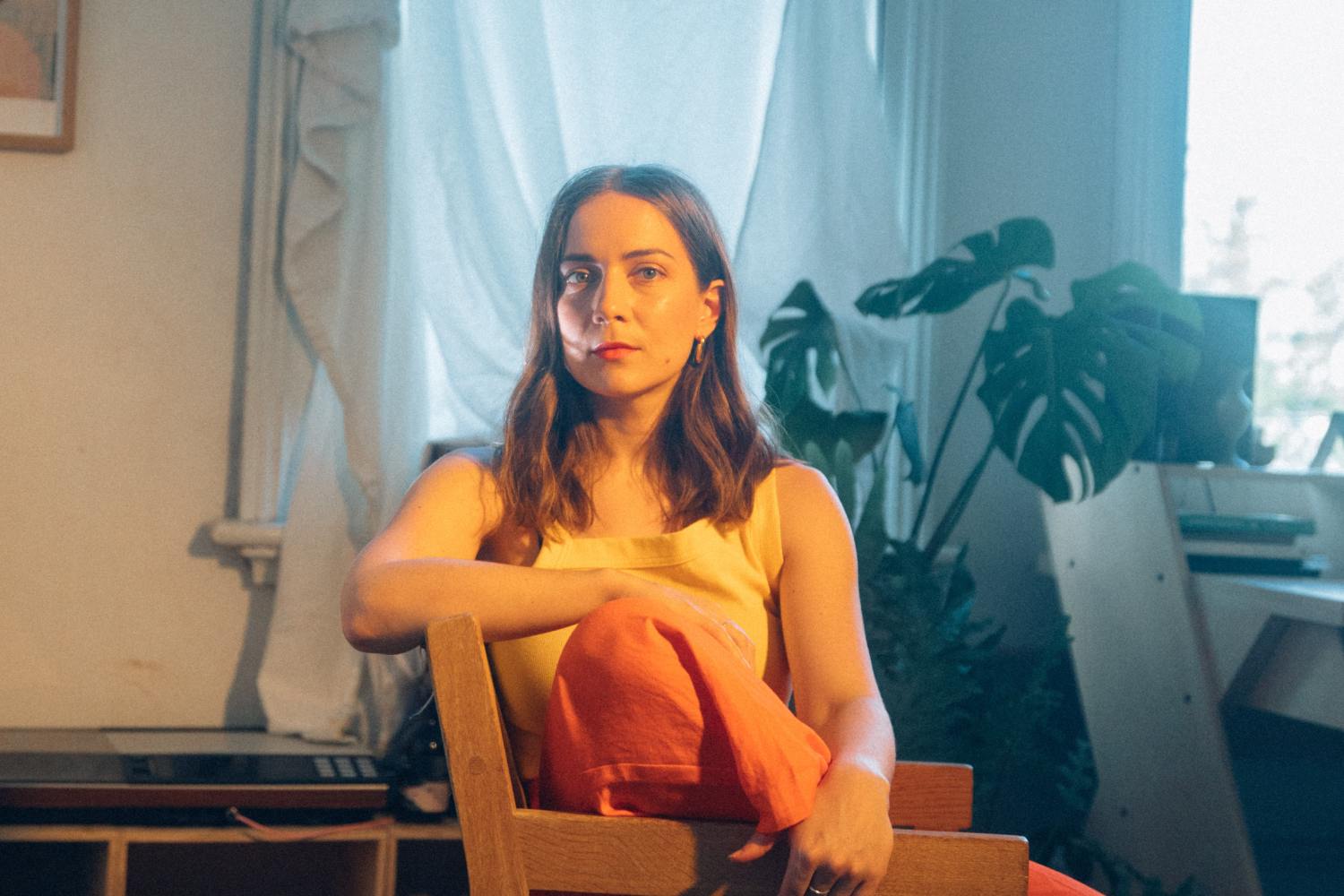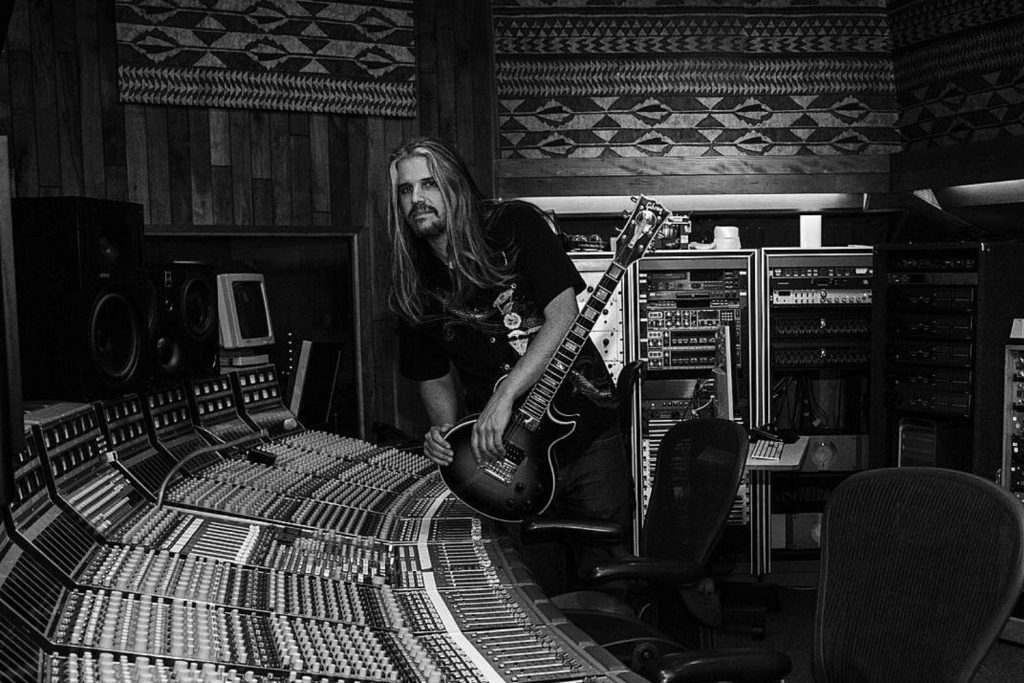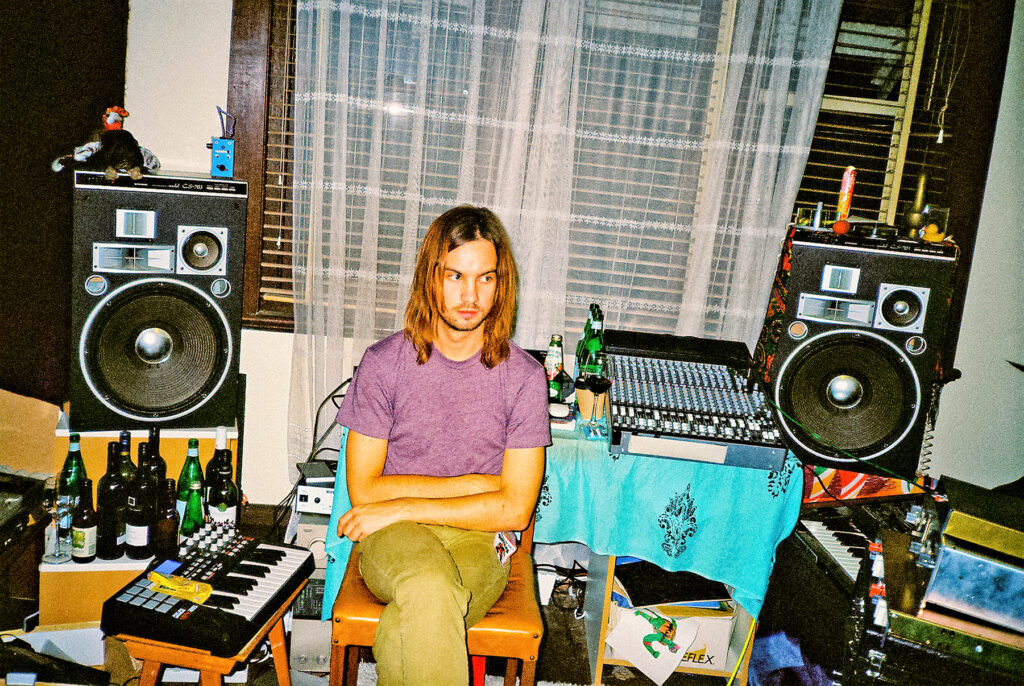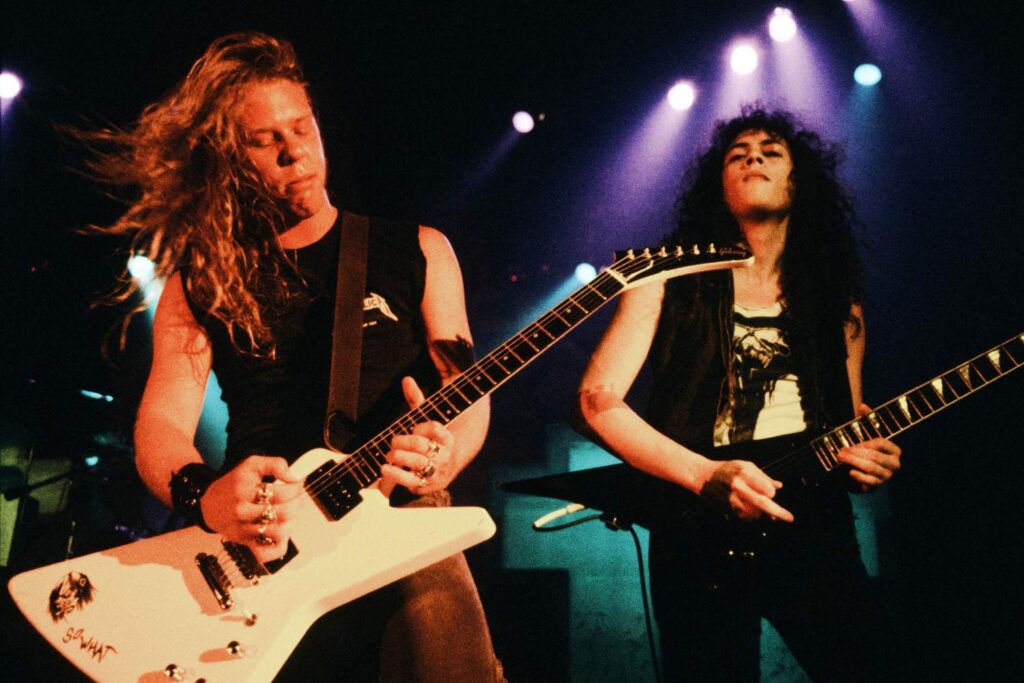Hannah Cameron’s third record Holding Pattern is out today. What began as an exploration on her Gretsch baritone evolved into a unique collection of songs, produced by Matt Redlich (Ball Park Music, Holy Holy, Husky, Dan Sultan).
Traditionally a folk artist, Hannah Cameron has established herself, but Holding Pattern pushes the boundaries a bit. There’s a rock energy to it, despite the arrangements being mostly made up of 3-4 musicians and few overdubs.
We’re sat in Balaclava’s Woodstock Studio, where elements of the album were recorded, with Hannah and Matt side-by-side in front of the Neve 8014 that serves as the heart of the control room. The studio has a warm ambience that feels comfortable but isolated from the outside world. It’s a space designed for creativity and focus.
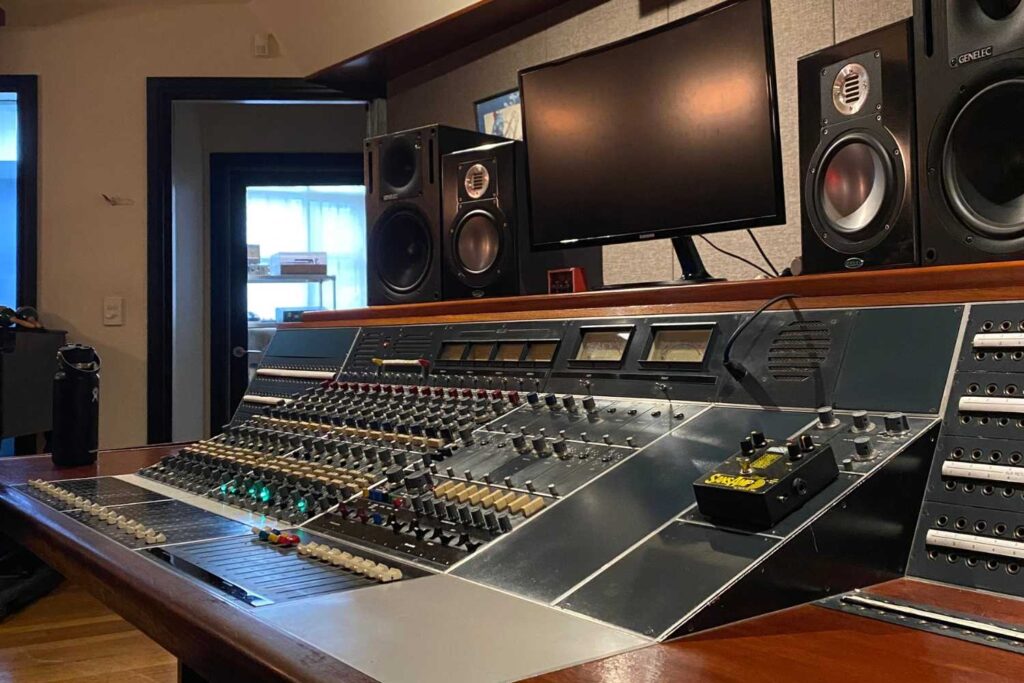
Read up on all the latest features and columns here.
I begin by clarifying what roles Hannah and Matt really played in making the album. Hannah is the songwriter, singer, guitarist and performer, but Matt explains that his role within making an album shifts from project to project.
“I’m a producer who occasionally writes bits and pieces, even songs, or parts of songs, with artists that I work with.”
“Sometimes on my own and then it becomes a collaboration. I try to fill any gaps that are required and if there’s no gap, then I don’t try to fill it.”
I shift to asking how complete the ideas are when they arrive at him, if it’s fully arranged and fleshed out songs or rough demos on a voice recorder or even pen and paper.
“It depends what you mean by ‘complete’. It needs to be enough that it’s self-sustaining, like the fire is burning. In some cases that can be a phone demo of them playing it really roughly in their bedroom. But there’s enough there that in my mind it will create a full picture.”
“Some people come with full demos with lots of individual little parts and riffs and melodies and even production stuff in there, and I feel equally good about all of it if it makes me feel good.”
With this in mind, I turn to Hannah and ask where the songs were at when she came to Matt to produce.
“I think the first batch of songs I’d demoed all of them with harmonies, I think, and some guitar part ideas. But they were pretty stripped-back otherwise.”
Matt agrees and nods. Hannah continues.
“Maybe “Backsliding” didn’t have anything, it was just me and guitar. “Backsliding” was the first one that we worked on. And I think there’d been other songs that I’d shown you and you were like ‘yeaahh’,” Hannah laughs, recalling Matt’s unsure response to early ideas. “‘I dunno’, and then you saw that. I posted I think, on Instagram, a snippet [of “Backsliding”], and you were like ‘that one!’”
“And that one was probably the least complete when we started on it. And then it came together really quickly. Other ones, I’d demoed the guitar part and the vocals and added a couple of overdubs.”
I ask Hannah how she was recording the demos herself.
“Yeah, well Matt kindly set me up. Well, helped get me set up at home, so I’ve got the [Universal Audio] Apollo Twin, and a pre, the Golden Age pre.”
Matt continues, “… little Neve-type pre thing and an SM7.”
“I guess you’re sort of aware these days,” he adds. “That someone might do a vocal take, they might do their best vocal take at home in a demo… I guess I’m sort of trying to help people, if they’re going to record stuff at home anyway, they may as well have it at a quality we can use easily if that’s possible.”
We shift a little here and agree that good equipment helps you to focus on making music, rather than fighting a microphone or preamp to sound good. Hannah agrees, she has her set up and everything is ready to go, the settings are the same. She doesn’t want to have to be recalling vocal presets when creativity inspiration strikes.
While feeling comfortable on her little recording setup now, Hannah explains that her writing and demoing process has changed. She’s traditionally written more on acoustic guitar, with a voice memo before playing the idea over and over and over.
She wrote a lot of songs and demos and ideas throughout lockdowns, and felt herself not needing to play the ideas to death, instead recording ideas, then building and shaping them. It’s a change in workflow that we all acknowledge has obviously worked, it having led to Holding Pattern.
We shift to Matt’s own sound and production style, Hannah explaining why she chose Matt to produce the record.
“We had a few mutual friends, and everyone who I spoke to spoke very highly of him. And I just loved the sounds I heard on those albums, and other stuff. It just has a really nice feeling about it as well, there’s an energy to the things that you [she turns to Matt] work on.”
“I think as well it’s a personality thing,” she says. “When you know you’ve got friends who’ve worked really well with them, it’s a safe bet… but we didn’t actually know each other before we started working on “Backsliding”.”
“Backsliding” is the first single off of Holding Pattern, and the first song Hannah and Matt worked on for the record. It was the idea that Matt saw on Hannah’s Instagram and ultimately pushed to work on, as he felt the ‘fire was burning’ in that idea.
“I had kind of a strange idea of how to do it, it was a bit of a high-risk way to do it, and so if it hadn’t worked, there probably wouldn’t have been an album.”
I have to know: what was so risky about the recording process?
“Some good friends of mine, Husky and Gideon from the band Husky, used to live in a house on Westberry Street that they called the ‘Westberry Hotel’. They’d just discovered that they were gonna have to move out, it was going to be demolished soon.”
“They’d also just bought this Tascam 388, 8-track, ¼” [tape] little recorder thing. I started doing some recordings in there, and realised the house sounded amazing.”
From here, Matt and Hannah decided to do the song beds for “Backsliding” at ‘The Hotel’. Bringing Leigh Fisher, Mike Panton and Luke Hodgson as session musicians, and Matt was just hoping for the best.
There was no pre-production and they had one day to do it. Matt wasn’t even sure if the band had heard the song, but he had brought stroke ideas of chords and sounds over Hannah’s idea. The take that ended up as the one used on the song, the band was little hesitant about, but Matt knew it was the friction and magic of the band finding their feet that made the energy of “Backsliding” what it is.
Matt explains that this is one song he sees as a bit of a checkpoint for his work. It’s had more positive feedback than a lot of other work, people naming this song specifically as a reason to work with him. It’s a message to him to take more risks and just go with his feelings more.
Matt and Hannah shift here to discussing how the bleed of a live band is what makes something feel right, Hannah referencing that her own perfectionism falls away when she’s recording as part of a group, rather than under the microscope of recording in an isolated manner.
“I feel like this approach meant that you’re just playing music with two great musicians and it felt so much better, for me. When you can zoom out in that way, it’s less about whether what I played was correct.” she says.
Matt’s attention turns to Woodstock Studios itself, motioning around the room and discussing how they’d had Hannah and her band playing together with the doors open between isolated spaces open to allow them to communicate and for sounds to bleed together.
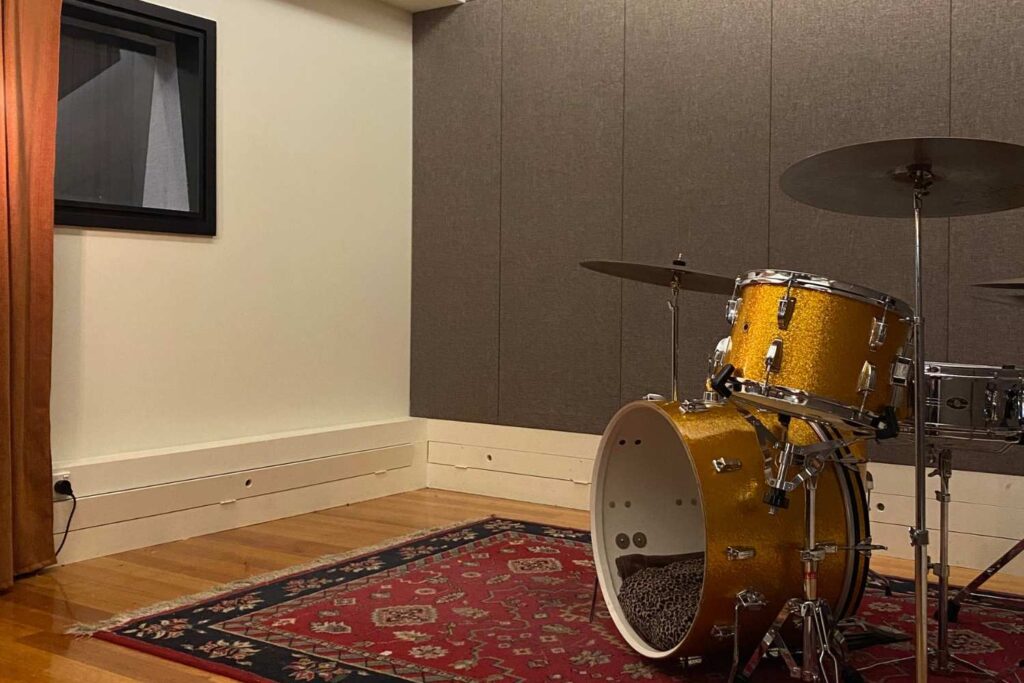
Sonic bleed is one thing, but the interaction between players is another according to Matt.
“It’s also the psychic bleed as well, in between the people doing it. They’re doing stuff that is mysterious and that you can’t just quantify and recreate later in the computer in my experience.”
Hannah speaks to this as well. “Before doing it this way… I feel like I was harder on myself like ‘is it in time?’ and ‘is it in tune?’ and all these things. Most of the recordings that I love, there is push and pull, and it’s not metronomically accurate?”
We move onto the reality of recording a band live, Matt and Hannah explaining that the first day or so was mostly set-up, but with little recording happening, small tweaks being made to make sure everyone was comfortable. Guitar tones were especially important, with Matt having to decide how much to push the amps themselves so they’d record well, and Hannah’s use of a baritone guitar.
“It was a big thing to contend with across the whole recording, is like – what you do with essentially two bass guitars.” Matt says.
A baritone guitar settles between a bass and guitar, occupying a lower frequency than a standard tuned guitar, but in turn making space for a voice like Hannah’s to nestle in above it in the arrangement.
“I just started writing more on baritone, I was not that inspired by the stuff I was writing on guitar… I really like the sonic range it occupies against my voice. I feel like the female voice [fights to] sits in a really similar space to a regular guitar.”
We’ve established how the basic song beds were done, Hannah and her band finding their feet doing it live, bleed and all, but I have to ask about one particular overdub: a horn that shines through for a moment in the album’s first song “Take The Blame”.
Hannah laughs. “In between the verses? That’s the ‘magic window’.” as she calls it.
Matt and Hannah laugh, recalling that this moment, that only lasts a few bars, took a long time to figure out. They’d had a horn player in to improvise a little, eventually encouraging him to do whatever he wanted. Matt added Soundtoys’ PrimalTap delay, set to about a bar of delay.
Hannah says “It’s cool ‘cause I didn’t know it needed anything there, but Matt was like ‘Nup, something has to happen in that moment.’ and what was the metaphor? The magic garden?”
Matt adds “I wanted it to be like you suddenly look out of the room through the window, that you see into the garden down the hill to the far distance and all the hills [Matt motions here, explaining expansive, soaring hills], and then you’re back inside the room with the band.”
Matt has one more anecdote, sharing that during recording the slide guitar for “Smells Like Leaving”. Hannah had made a video of all the footage on tour with other bands around the world, shot from the van window as they drove from show to show.
Matt loved it, felt the footage was very evocative, and had it playing while Matt Dixon was playing pedal steel. The video informed Matt’s direction for the slide guitar, informing note choice and the fades in and out.
In Holding Pattern, Hannah’s role was to write and perform the music, bringing her lyrics and chords for Matt to shape and ultimately arrange into the complete body of work, often using imagery and video to keep them on track or inspire new sounds.
For a sparsely arranged album, Holding Pattern has a rock energy, built on the back of bleed between mics, dynamic performances from great musicians as well as some crafty distorted room mics and ambience. The songs push Hannah to establish her own voice, using a unique guitar, her own iconic vocal style, coupled with a stripped-back, simplified backing band anchoring her, playing to the Matt’s mantra to the rhythm section: “Dumb and strong.”
In closing, Matts says “When you simplify it, you can make the sounds bigger when there’s less of them. And so maybe that’s what’s giving it that feeling.”
Keep up with Hannah here.
